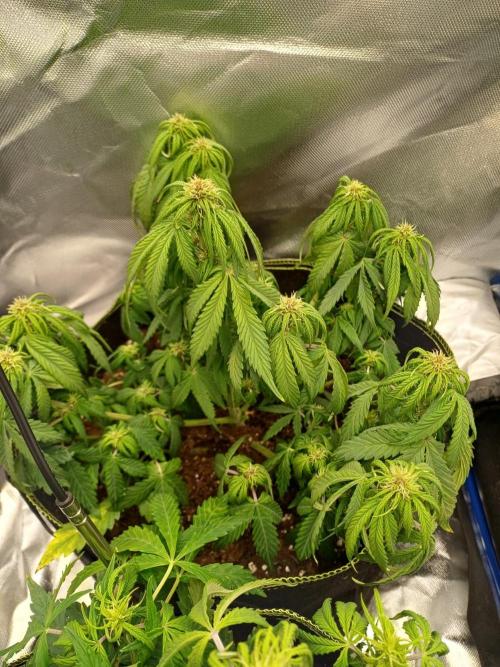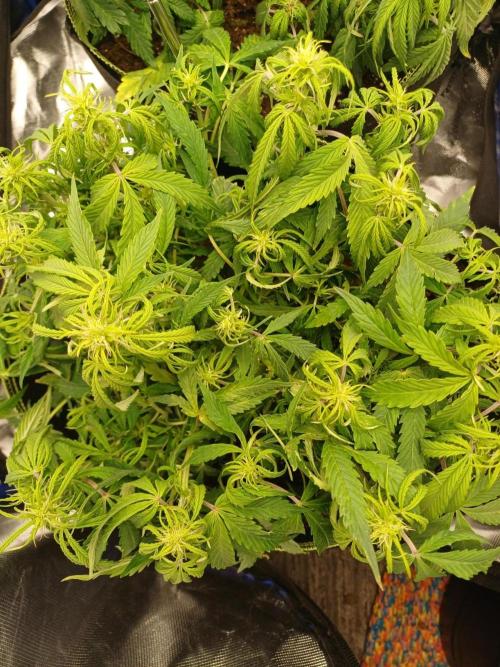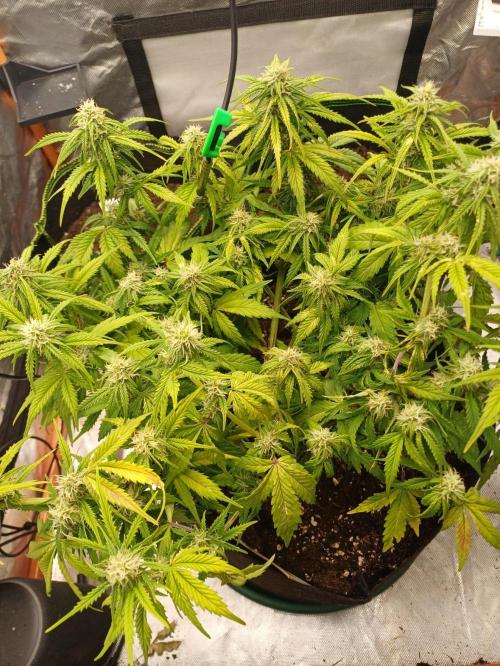By continuing to use the website or clicking Accept you consent to our cookies and personal data policy and confirm that you are at least 18 year old. For details please see Privacy Policy and Terms
Accept
Covided!
Enochianstarted grow question 9h ago
After 10 days of a high fever and respitory problems with Covid, I awoke to find my girls in a bad way. Poor watering/feeding and very low VPD has thrown them into a spin. I have topped up the substrate and watered well but all are looking very worse for wear. Is there anything I
Open
likes
Answer
Ninjabudsanswered grow question 6h ago
It need some nutrients I would give veg and flower nutes to pull it back around do t go over board take it easy the color will come back over the corse of 10 days or so. Also when the plant gets that dry just water it 1 time a day for the next few days till the leaves start to have some perkiness going o
likes
Complain
Nocone_Purpleanswered grow question 7h ago
From the looks of it, they’re mostly suffering from dehydration and low VPD stress the drooping and yellowing fit that perfectly. Keep your temps steady around 24–25°C, humidity near 60%, and let them rehydrate slowly rather than flooding them at once. A bit of patience and they’ll likely perk back up in a few days
likes
Complain
m0useanswered grow question 7h ago
water in slowly mutipule days, use a weeting agent like Yucca, and let the roots re hydrate. It should bounce back. Do not feed right away of if you do mix it into the water and make it 1/4 strength.
likes
Complain
Antifameanswered grow question 9h ago
You’ve done a good job diagnosing the situation early. Your plants are under significant stress, but they can recover if stabilized soon.
🌡️ Stabilize the Environment
VPD is critical — too low and transpiration slows dramatically, suffocating root uptake.
Raise VPD to a healthy range:
Vegging plants: 0.8–1.2 kPa
Flowering: 1.2–1.5 kPa
💧Watering
Your plants show signs of both overwatering and underwatering stress (drooping, chlorosis, slow recovery).
Allow the top inch of soil to dry before watering again.
When watering, do it slowly and evenly to avoid dry pockets.
Ensure runoff of 10–20% each time to flush excess salts.
Make sure pots drain freely — avoid standing water under the pots.
🌱 Feeding
The yellowing (especially lower leaves) and pale tops suggest nitrogen and magnesium deficiency, possibly combined with pH imbalance.
Check runoff pH (goal: 6.3–6.8) and EC (goal: 1.0–1.4 for mid-flower).
If the pH is off, flush with properly pH’d water until it stabilizes.
Feed a balanced bloom nutrient mix after the flush (something around NPK 2–4–5 or similar).
Add a Cal-Mag supplement once or twice a week for now.
💨 Lighting
Stress plus intense light can worsen the damage:
Raise your light or dim it to 70–80% intensity until plants perk up.
Keep light distance around 18–24 inches (45–60 cm) from canopy for LEDs.
🌿 Recovery Signs to Watch For
Leaves should start standing up again within 2–4 days.
New growth should appear greener and tighter.
Old damaged leaves may not recover — focus on new growth instead.
🚑 Optional Recovery Boosters
A mild kelp or seaweed extract (contains cytokinins) can help roots recover.
Microbial inoculants (mycorrhizae, trichoderma, etc.) can stabilize soil life.
Avoid strong PK boosters or additives until they look healthy again.
Hope that helps and you and your babies get well soon. 😘
likes
Complain
Green_clawsanswered grow question 9h ago
Had covid myself 6 month ago still don't feel 100%.hortible isn't it.. Just looked over your diary and I'm guessing when you messed the feed it was too much not too less, they look deprived of nitrogen for quiet a while and you've only been giving water after the feed mess up. I'm guna guess that they went way too long without water basically killing the roots then an attack with nutrients at a mega high rate has pushed her too her limits trying to survive this attack, I would say keep giving just water getting run off and see how they get on. Your waiting on the root zone to recover, only time will tell. I also lost a few plans with me led in bed dieing it was hard to breath never mind get up and bother about the plants. That feeling is the worst I have ever been.. It happens your health cones 1st always will.. Much love 💚
likes
Complain









